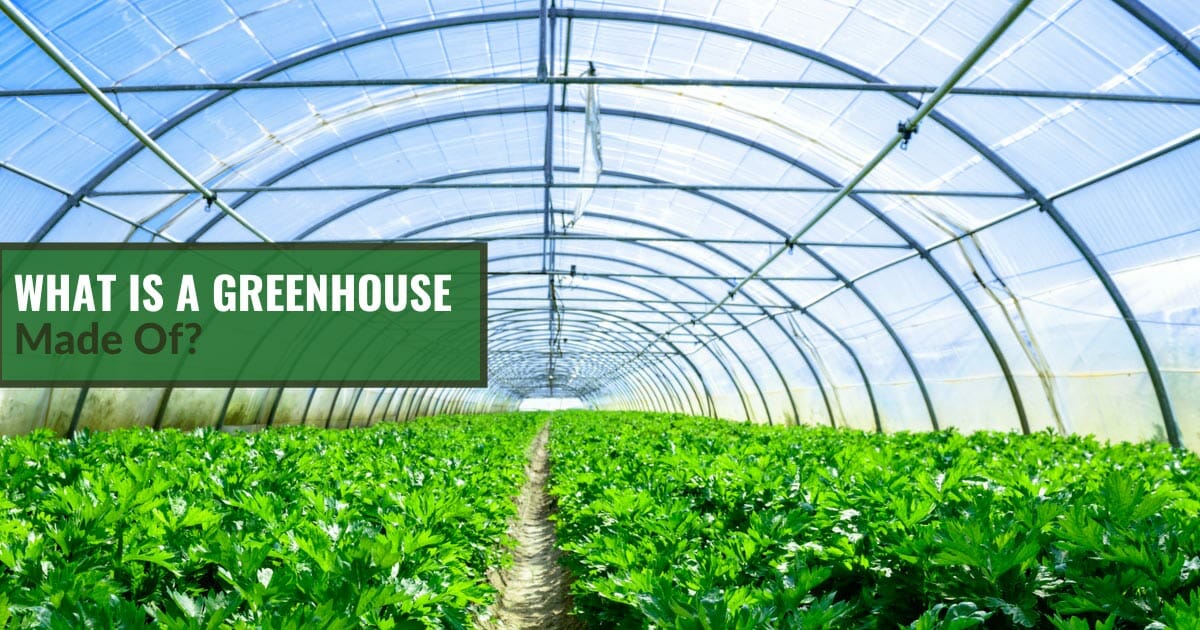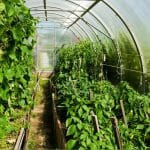
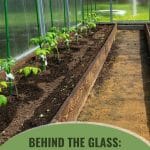
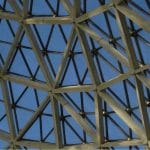
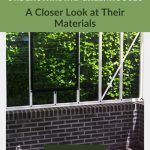

When we think about what a greenhouse is made of, most of us probably imagine an old Victorian structure made from wrought iron and glass. Thankfully, in the 21st Century, that’s no longer the case, and a greenhouses can be made of any number of materials and components.
As with everything else, each of these has its own advantages and considerations that affect maintenance, internal conditions, and weather resistance.
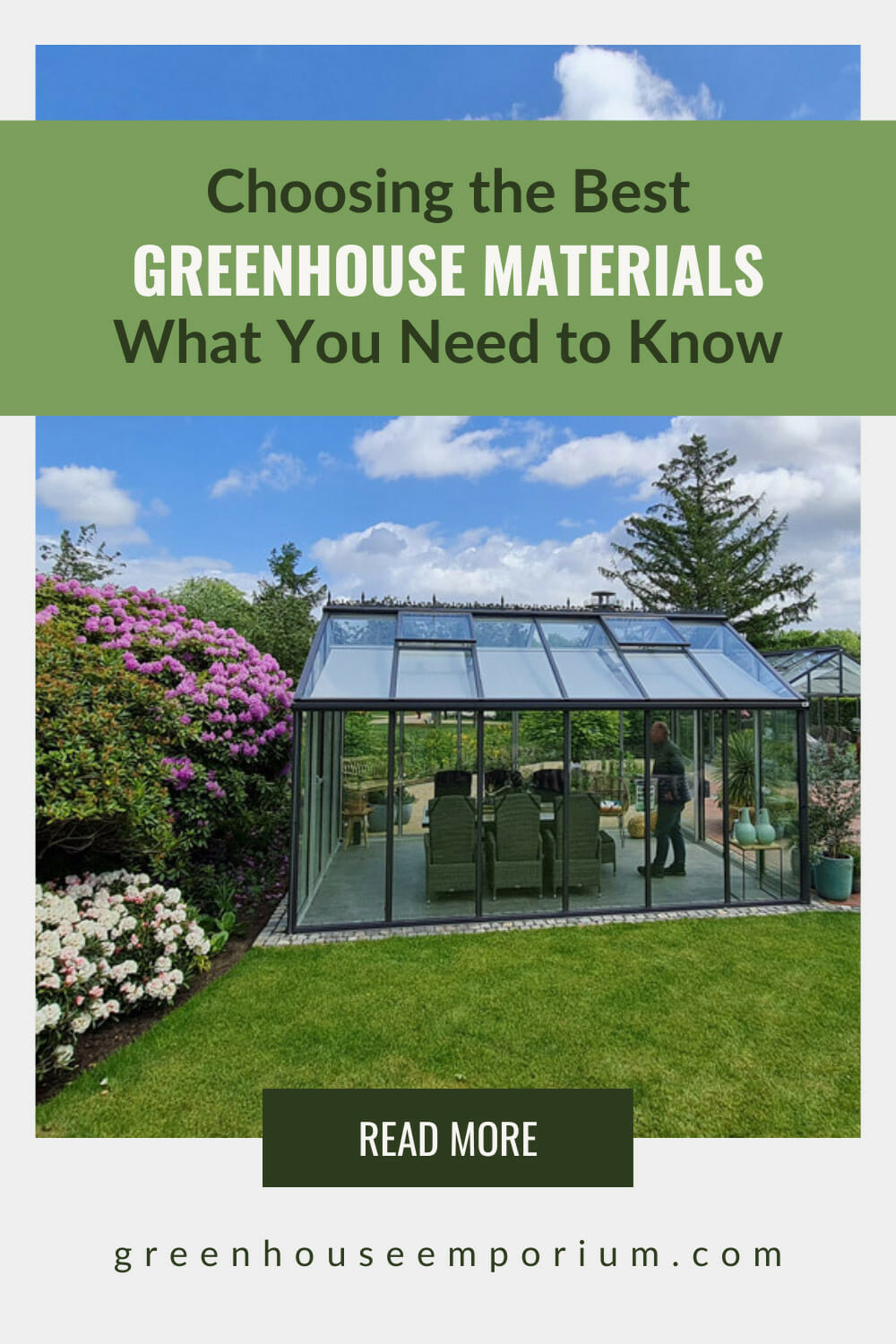
So if you’re planning on building a greenhouse and you’re not sure what you want to make it from, you’re in the right place.
What this article covers:
- Structural components of a greenhouse
- Considerations for framework material
- Insulation
- Importance of insulation in greenhouses
- Ventilation and light control
- Environmental considerations
- The best material for your greenhouse
Structural components of a greenhouse
Framework
Your greenhouse frame is the skeleton that supports the entire structure. Several materials are commonly used in greenhouse construction, including aluminum, steel, and wood.
Aluminum
Aluminum is a popular choice for greenhouse frameworks due to its lightweight nature, durability, and resistance to rust and corrosion. It is easy to work with and provides an excellent strength-to-weight ratio, making it suitable for both small and large greenhouse structures.

Steel
Steel is known for its strength and durability, making it a preferred choice for larger or commercial grade greenhouses. It offers high structural integrity and can withstand heavy loads and extreme weather conditions.
However, steel may require larger or commercial-scale greenhouses additional anti-corrosion treatments to prevent rust. What’s more, it tends to be pretty expensive, which makes it prohibitive for most people looking to build a greenhouse at home.
Wood
Wood has been used for greenhouse frameworks for years. It provides natural insulation properties and is aesthetically pleasing. However, wood requires regular maintenance to protect against rot, pests, and weather damage. Treated lumber or naturally rot-resistant wood species are recommended for longevity.
If you’re looking to build an aquaponics greenhouse, wood probably isn’t the right choice since it’s prone to water damage.
Considerations for framework material
When selecting the framework material for a greenhouse, consider the intended size and purpose of the greenhouse, budget, local climate conditions, and your preferences.
It’s essential to choose a material that offers the necessary strength, durability, and longevity required for the specific greenhouse application.
Covering materials
The materials of a greenhouse cover serve multiple purposes, including protection from external elements, light transmission, and heat retention.
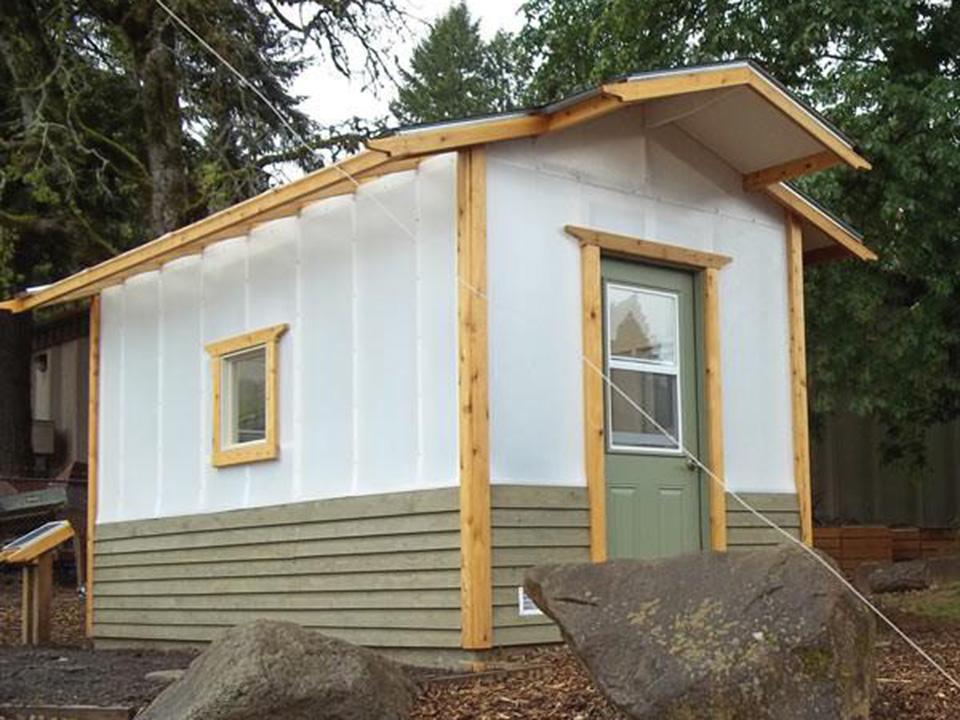
There are various options available, each with its own benefits and drawbacks.
Glass
Glass is a traditional and aesthetically pleasing choice for greenhouse coverings. It offers excellent light transmission, durability, and longevity. Glass also provides natural UV filtration and is resistant to scratching.
However, glass can be heavy and prone to breaking under stress or impact. While it’s the right choice for building a solar greenhouse, it also needs extra care while working.
Types of glass used in greenhouse construction
Common types of glass used include float glass, tempered glass, and horticultural glass. Float glass is economical and widely used, while tempered glass is stronger and safer due to its ability to shatter into small fragments.
Polycarbonate
Polycarbonate is a lightweight and impact-resistant material, making it a popular alternative to glass. One of the great things about polycarbonate is its versatility.
You can find clear polycarbonate panels which have great light transmission (though they let through a little less light than clear glass), or you can find panels that are more opaque and diffuse the light more. This means you can get a polycarbonate panel to fit your exact specifications.
Our Royal Victorian Polycarbonate Greenhouse is a 13 by 20 foot prefab greenhouse that’s perfect if you don’t have the time or tools to build your own greenhouse from scratch.
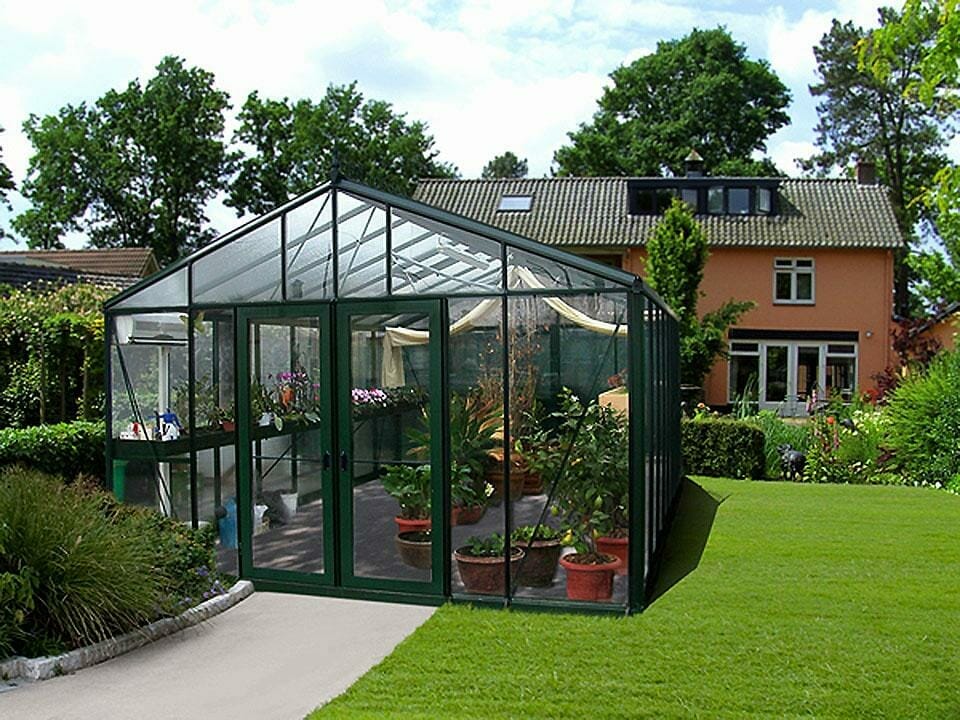
Different types of polycarbonate panels
Twin-wall and multi-wall polycarbonate panels are commonly used in greenhouse construction. Twin-wall panels have two layers of polycarbonate with air pockets for improved insulation, while multi-wall panels consist of multiple layers, offering increased strength and thermal performance.
Polyethylene film
Polyethylene film is a cost-effective option for greenhouse coverings. It provides good light transmission, is lightweight, and easy to install.
However, it has a shorter lifespan compared to glass or polycarbonate and requires regular replacement.
Different grades of polyethylene
Polyethylene film comes in various grades, such as high-density polyethylene (HDPE) and low-density polyethylene (LDPE). HDPE is more durable and tear-resistant, while LDPE is more economical but less durable.
Acrylic
Acrylic, also known as plexiglass, is a lightweight and shatter-resistant alternative to glass. It offers excellent light transmission, UV resistance, and weatherability. Acrylic is suitable for greenhouses requiring high light transmission and where impact resistance is desired.
Insulation
Insulation plays a crucial role in greenhouse construction by reducing heat loss and maintaining a stable environment for plants. Several insulation materials are commonly used to enhance energy efficiency and temperature control within the greenhouse.
Importance of insulation in greenhouses
Insulation minimizes heat transfer, reduces energy consumption, and prevents temperature fluctuations, especially in colder climates. It helps retain heat during colder periods and prevents excessive heat buildup during hot seasons.
The dimensions of your greenhouse play an important role here. The larger the greenhouse, the more effort you have to put into keeping it warm.
Common insulation materials
Commonly used greenhouse insulation materials include thermal blankets, rigid foam panels, bubble wrap, and insulating curtains. These materials provide an additional layer of thermal resistance, helping to maintain a more consistent and favorable growing environment for plants.
Ventilation and light control
Proper ventilation and light control are essential for maintaining optimal growing conditions inside the greenhouse.
Adequate airflow helps regulate temperature, humidity, and carbon dioxide levels, while light control allows growers to manage sunlight exposure and prevent excessive heat or light stress on plants.
Importance of proper ventilation
Ventilation prevents excessive humidity buildup, reduces the risk of fungal diseases, and ensures a fresh supply of oxygen for plants. It also helps regulate temperature and prevents heat stress on plants during hot weather.
Types of vents and windows
Greenhouses can incorporate various types of vents and windows, such as roof vents, side vents, or automatic louvers. These openings can be manually operated or automated, allowing for the controlled flow of air and temperature regulation.
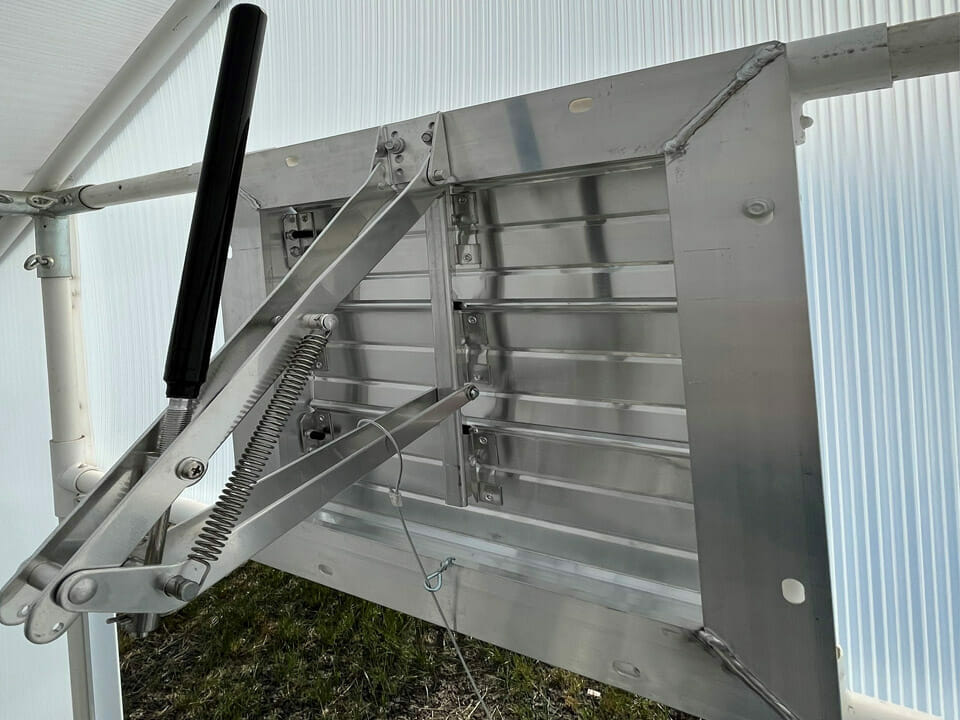
Light-diffusing materials
To prevent excessive sunlight exposure and reduce the risk of sunburn or heat stress, greenhouses often employ light-diffusing materials for shading. These are any shade cloths, reflective films, or screens that scatter and filter sunlight, providing a more diffused and gentle light environment for plants.
The percentage of shade cloth you need for your greenhouse depends on the amount of light it receives throughout the day. Also, consider what you’re using your greenhouse for and what kind of plants you want to grow.
Seedlings and shade-loving plants should be protected with a shade cloth that blocks 30-50% of the light, depending on the light your greenhouse gets.
The advantage of shade cloth is that it can easily be removed and changed out, so you can go for a heavier 50% shade when your plants are young and change it out for something thinner once they’ve matured.
Environmental considerations
Energy efficiency and sustainability in greenhouse construction
Energy efficiency and sustainability are key factors that growers and designers consider to minimize environmental impact and optimize resource usage.
To achieve energy efficiency, greenhouse designs often incorporate features such as double-glazed or insulated coverings, which reduce heat loss and minimize the need for artificial heating.
Sustainability is another important aspect of greenhouse construction.
Using recyclable and eco-friendly materials minimizes waste and reduces the greenhouse’s carbon footprint.
Many greenhouse builders opt for materials that can be recycled or reclaimed at the end of their lifespan, such as aluminum or steel frames and polycarbonate panels made from recycled content.
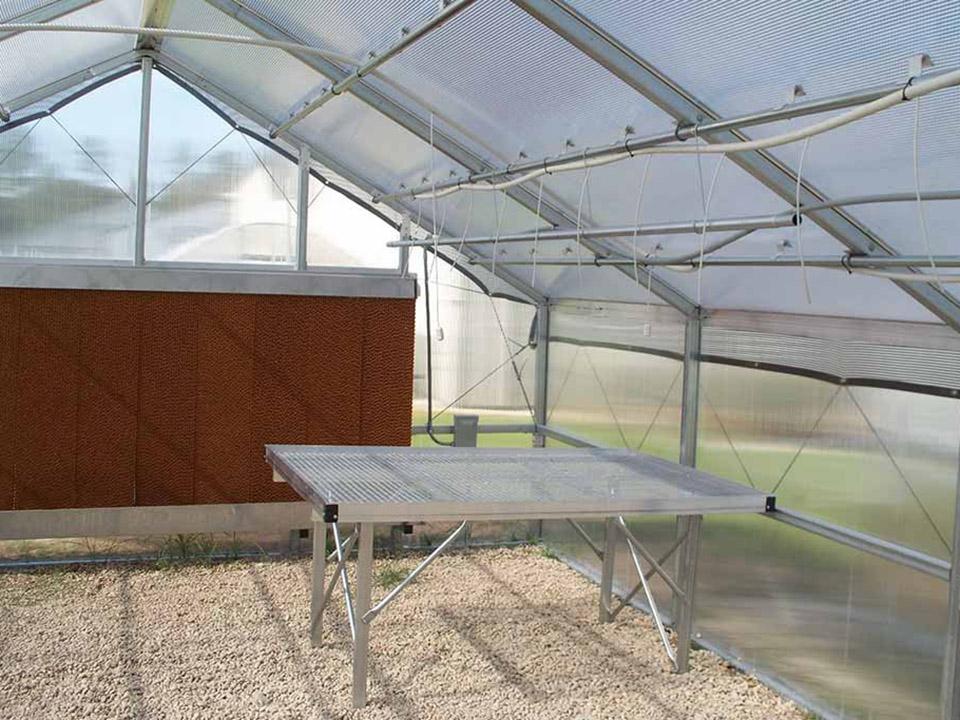
Recyclable and eco-friendly materials
The choice of materials used in greenhouse construction can significantly impact its environmental footprint. Opting for recyclable and eco-friendly materials ensures that the greenhouse contributes to sustainability goals.
Recyclable materials, like aluminum, steel, glass, and certain plastics, can be repurposed or recycled at the end of their life cycle, reducing the need for new resource extraction. Additionally, using materials with recycled content, like recycled polycarbonate panels or reclaimed wood, further reduces the environmental impact.
Eco-friendly materials go beyond recyclability and focus on sustainable sourcing and production methods. For example, using sustainably harvested wood from certified forests or selecting renewable materials like bamboo can contribute to greener greenhouse construction practices.
The best material for your greenhouse
There are greenhouse materials for pretty much every situation and location. Whether you’re living in cold mountains or hot desert plains, the materials used to make your greenhouse will provide your plants with the right environment to grow and provide you with a high yield year-round.
We’ve only just begun to scratch the surface of the various materials you can use to make a greenhouse. Have you got your own favorites? We’d love to hear about it in the comments below.

Jesse James
Jesse James, an Army Veteran, now shares his passion for gardening through engaging articles on Greenhouse Emporium. Leveraging his experience and love for nature, Jesse provides practical advice and inspires others on their gardening journey.

